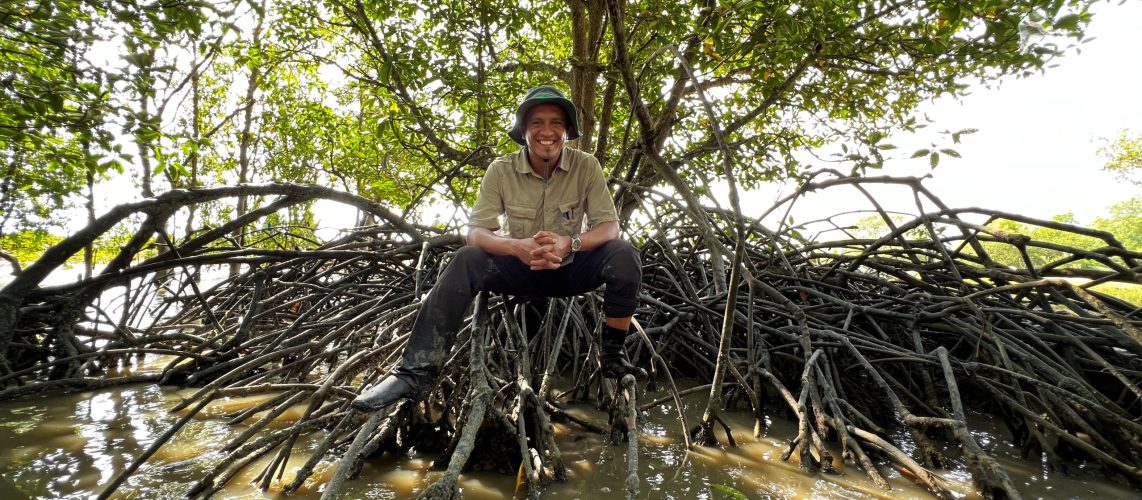This article has been published in the New Straits Times on 17th May 2019.
LIKE humans, mangrove forests require a consistent supply of clean and healthy fresh water for their survival.
This is an important basic need often misunderstood by resource managers, thinking mangroves would survive only in saline hydrological condition.
Just like other plants and living organisms, mangroves use fresh water and oxygen for their physiological development. But as opposed to other types of plants, mangroves dominate sheltered intertidal zones and tolerate the salty environment.
Mangroves mainly flourish in brackish estuarine areas where the tidal water meets the fresh water. Here, various physical, chemical and biological exchanges and transactions take place.
For instance, the nutrients and silts transported by water from both the marine and the terrestrial environments merge in the estuary to promote land building and sediment enrichment, and in due time, the ecosystem balances and stabilises itself.
Incidentally, the process includes the loading of anthropogenic pollutants, and therein lies the additional challenge for mangroves to remediate.
Naturally, mangroves as an ecosystem are very efficient at playing the remediating role. However now, the imbalance widens between the ever increasing load of pollutants with the continuous decline of mangrove forests, decreasing their ability to function effectively in providing these substantial ecosystem services.
Damming and impoundment of rivers elevate this imbalance. On one hand, dams lower the volume and minimise the speed of fresh water flow, increasing the salinity of water and the concentration of pollutants in the estuaries.
On the other hand, some rivers are locked by barrages for flood control and to maintain the depth of water to allow for tour boats and cruises to operate, among others. One must understand that mangroves favour the flow of water and the exchange of tides, but they will not survive in waterlogged areas.
This negligence on the environmental aspects of river management results in a destructive chain reaction.
River impoundment disrupts the hydrology of a river, causing mangroves and riparian plants to die and suffocates marine fauna as the water becomes stagnant, anoxic and toxic. This situation will backfire and cause river tourism to collapse.
On a more critical note, river pollution is a major issue in Malaysia as we can hardly find crystal clear rivers anymore, especially in the peninsula.
The effluents and pollutants released into the rivers eventually reach the mangroves and enter the ocean, affecting other downstream ecosystems such as the seagrasses and corals.
Therefore, water quality and pollution control should be a primary concern for all Malaysians.
Based on the recent catastrophe in Sungai Kim Kim and other previous cases, we obviously cannot just rely on the Department of Environment and the Environmental Quality Act alone.
Controlling water and river pollution must begin right before the start of any kind of activities on land, particularly when they involve land acquisition, land clearing and land-use change.
Hence, the state exco, the district and land offices together with the municipalities must be the first authorities to set and enforce the ground rules before accepting the idea, approving the proposal and giving out licence for any activity to be carried out on land, and on water for that matter.
Too often we hear sad pleas and shocking complaints from villagers about polluting projects and development, either established legally or illegally, happening near them without any prior notice. Of course other relevant agencies, stakeholders and the public have their roles to play too, and it is now the time to coordinate and identify the gaps in the existing legal and enforcement tools and standard operating procedures to overcome this cross-sectoral issue. It is important to note that many major towns and cities throughout Malaysia are located on coastal areas.
Many of which have evolved with a direct link and dependency on the resources from and surrounding their rivers, estuaries and coasts. As the towns and cities develop, the priority on sustaining the health of mangroves and rivers has dwindled.
Our attachment to these natural resources as our lifeline has somehow diminished. It seems like our design for economic development has undermined the importance of the environment, one of the triple bottom lines of sustainable development, and this is actually a very bad sign.
Unsustainable development is a destructive key that kills civilisations. This had happened before to some old and ancient societies and this may happen again if we don’t care and if we continue to ignore.
With advanced knowledge and modern technologies, we might have discovered new ways, solutions and alternatives to sustain our economy, but we should not neglect the original surrounding — the natural resources and the environment — that have provided the basic foundation for our survival in the first place.
Water and rivers are the agents and medium that connect lives and provide living for many millions of their dependents, and it is our responsibility to protect and to manage them well.
In order to do that, we must not go down the unsustainable development road as it will take us to a dead end, from which no exit is possible, not even a U-turn.
The writer is senior lecturer and research fellow at Institute for Environment and Development (Lestari), Universiti Kebangsaan Malaysia and coordinator for the Malaysian Mangrove Research Alliance and Network (MyMangrove)
